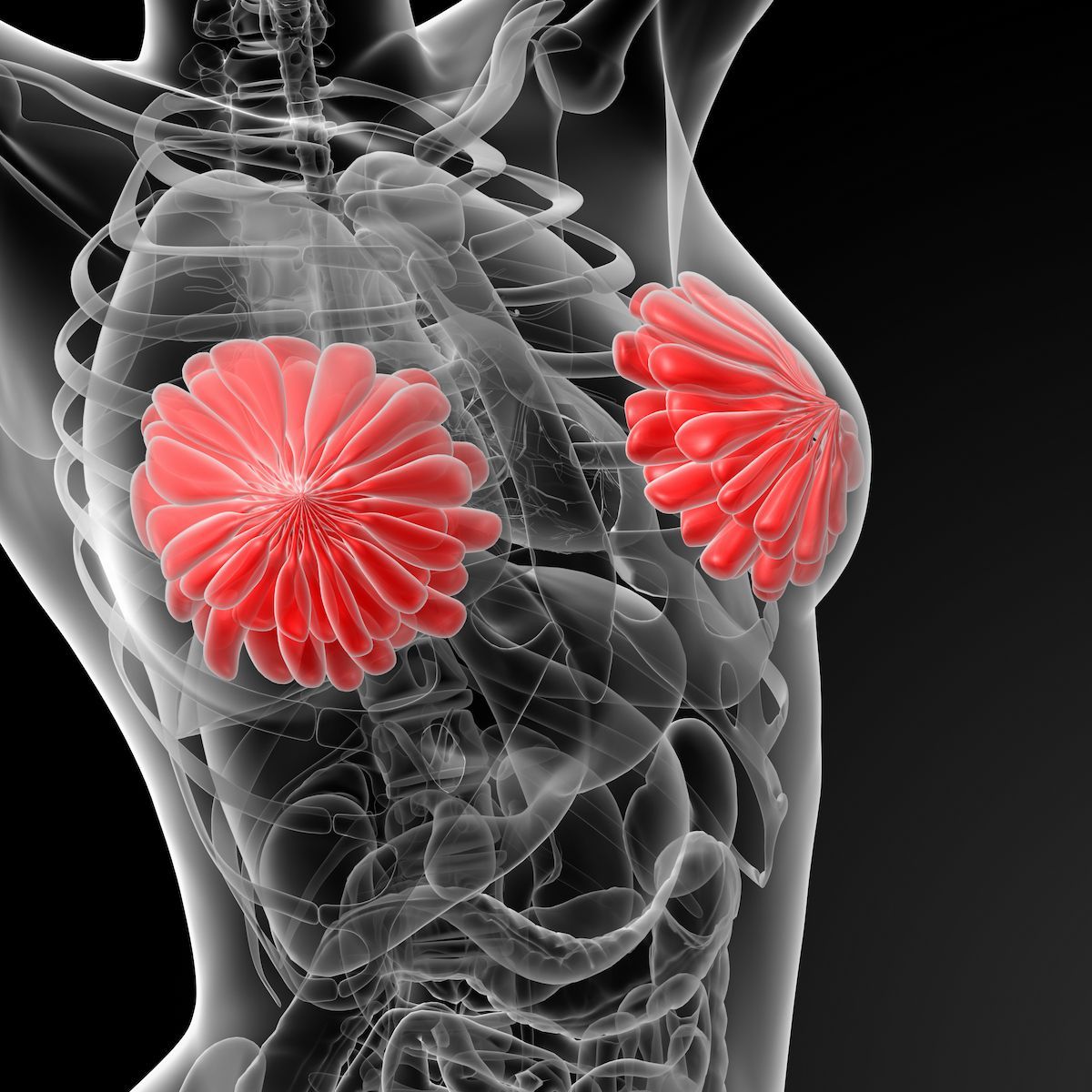Chemo Combo Associated with Improved RFS in Specified HR+/HER2- Breast Cancer Population
Relapse-free survival was improved when anthracycline combo was used to treat MammaPrint high-2–risk, BluePrint Luminal B, HR-positive, HER2-negative breast cancer.
Relapse-free survival was improved when anthracycline combo was used to treat MammaPrint high-2–risk, BluePrint Luminal B, HR-positive, HER2-negative breast cancer.

The FLEX registry trial (NCT03053193) highlighted improved 3-year relapse-free survival (RFS) when anthracycline plus a taxane and cyclophosphamide was used to treat patients with MammaPrint (MP) high-2, BluePrint Luminal B, hormone-receptor (HR)–positive, HER2-negative early breast cancer, of which results were presented at the 2024 American Society of Clinical Oncology (ASCO) Annual Meeting.
Findings showed that patients with Luminal MP high-1–risk disease had comparable 3-year recurrence-free survival (RFS) rates when treated with a taxane and cyclophosphamide (n = 346) at 97.1% (95% CI, 95.1%-99.2%) and with anthracycline plus a taxane and cyclophosphamide (n = 184) at 95.3% (95% CI, 91.8%-98.8%). However, patients with Luminal MP high-2–risk disease had a worse 3-year RFS rate when treated with the 2-drug regimen (n = 40) at 86.4% (95% CI, 74.2%-100%) compared with the anthracycline regimen (n =44) at 97.7% (95% CI, 93.4%-100%).
"In the real-world FLEX registry trial, patients with MammaPrint high-2–risk, BluePrint Luminal B, HR-positive, HER2-negative early breast cancer had a higher 3-year RFS rate with anthracycline plus a taxane and cyclophosphamide than with a taxane and cyclophosphamide therapy in this non-randomized cohort," Joyce O'Shaughnessy, MD, explained in a presentation of the data. "Luminal MammaPrint high-1–risk patients had similar 3-year RFS rates with an adjuvant taxane and cyclophosphamide [compared] with anthracycline plus a taxane and cyclophosphamide."
O'Shaughnessy serves as co-chair of Breast Cancer Research and chair of Breast Cancer Prevention at Texas Oncology Baylor-Sammons Cancer Center and for The US Oncology Network, in Houston, and is a member of the Scientific Advisory Board for US Oncology Research Network.
Previously reported data from the Anthracyclines in Early Breast Cancer (ABC) trials (NCT01547741; NCT00493870; NCT00887536) indicated that docetaxel plus cyclophosphamide was inferior to an anthracycline-based regimen in terms of invasive disease-free survival (iDFS) for patients with high-risk, HER2-negative breast cancer. However, the advantage of the anthracycline-based regimen was modest, with incremental improvements in both 5-year iDFS and recurrence-free interval (RFI) rate.
However, when stratified by estrogen receptor (ER) status, the 5-year RFI rate was significantly better for patients with ER-negative, HER2-negative breast cancer treated with an anthracycline-based regimen (HR, 1.90; 95% CI, 1.39-2.61; P < .0001). The difference in 5-year RFI rate was not statistically significant for patients with ER-positive, HER2-negative breast cancer (HR, 1.19; 95% CI, 0.96-1.47; P = .11). Given the differences in outcomes with the addition of anthracycline, O’Shaughnessy explained that genomic classifiers used to predict the risk of recurrence could help identify subsets of patients with HR-positive, HER2-negative early breast cancer who could benefit from the addition of anthracycline.
The 70-gene MammaPrint test is intended to classify patients with HR-positive, HER2-negative early breast cancer into subgroups based on distant recurrence risk, including ultra-low, low, high-1, or high-2 risk. In her presentation, O'Shaughnessy stated that it has been shown that patients with high-2–risk cancers can benefit from neoadjuvant chemotherapy, and they have increased sensitivity to platinum-based chemotherapy, PARP inhibitors, and checkpoint inhibitors. Conversely, patients with high-1–risk, HER2-negative early breast cancer do not have increased sensitivity to platinum-based chemotherapy, PARP inhibitors, and checkpoint inhibitors, although they can experience a benefit from neoadjuvant chemotherapy.
Previous data from the FLEX trial showed that patients with MP high-2–risk, HR-positive, HER2-negative disease were associated with increased sensitivity to neoadjuvant anthracycline-based therapy. In patients with MP high-2–risk disease treated with an anthracycline-based regimen (n = 63), the pathologic complete response rate was 32.0% compared with 0% for those given a taxane and cyclophosphamide alone (n = 10).
FLEX was a prospective, observational study that enrolled patients with stage I to III breast cancer whose tumors were analyzed using the MammaPrint Index. Patients are required to consent to complete somatic genome evaluation and clinical data collection. This study evaluated 614 patients with HR-positive, HER2-negative early breast cancer, characterized by MP high-risk and BluePrint Luminal B-Type tumors. These patients were required to have received chemotherapy and had at least 3 years of follow-up since diagnosis, and patients received standard-of-care chemotherapy at the physician's discretion. The trial’s endpoint was RFS.
The mean age of all patients evaluated (n = 614) was 58 years (±11); 73.6% of patients were post-menopausal; 80.1% were White, 11.1% were Black, 5.5% were Latin American, and 2.6% were Asian American/Pacific Islander. Regarding tumor stage, 59.3%, 35.3%, 4.7%, and 0.7% were T1, T2, T3, and T4, respectively. Additionally, 76.4% of patients had node-negative disease; 13.4%, 58.5%, and 28.1% had grades 1, 2, and 3 disease, respectively; and 37.1% of patients received the anthracycline-based regimen.
Notably, patients with higher-grade tumors and more aggressive disease were more likely to receive intensive chemotherapy regimens.
"These real-world data suggest that [patients with] MammaPrint high-2–risk, HR-positive, HER2-negative early breast cancer may benefit from the addition of doxorubicin to taxane/cyclophosphamide therapy," O'Shaughnessy reported. "However, validation within other studies is needed."
She concluded by noting that continued accrual to a total of 30,000 patients with 10 years of follow-up is planned for the FLEX trial.
Reference
O'Shaughnessy J, Graham CL, Whitworth P, et al. Association of MammaPrint index and 3-year outcome of patients with HR+HER2- early-stage breast cancer treated with chemotherapy with or without anthracycline. J Clin Oncol. 2024;42(suppl 16):511. doi:10.1200/JCO.2024.42.16_suppl.511